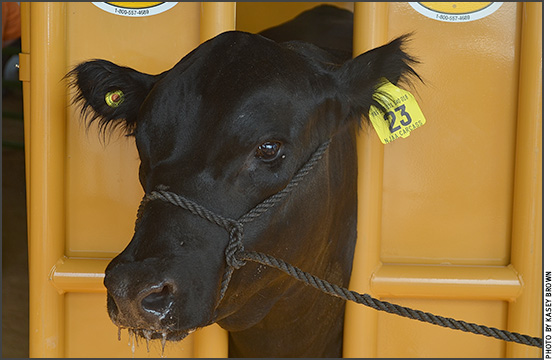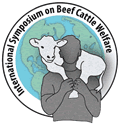
Pain Management Update
Options are emerging for pain management, though not yet approved for use in United States.
Consumers care about pain management for livestock, and they are putting pressure on cattlemen to provide pain mitigation to their cattle when painful procedures are required. That’s not to say cattlemen themselves don’t care; they simply have limited options. The trouble is that there are no approved legal analgesics, or drugs that relieve pain, available to U.S. cattlemen, says Mike Kleinhenz, veterinarian and research graduate assistant at the College of Veterinary Medicine at Iowa State University. He spoke at the fifth International Symposium on Beef Cattle Welfare (ISBCW) in Manhattan, Kan., June 8-10.

Mike Kleinhenz, veterinarian and research graduate assistant at the College of Veterinary Medicine at Iowa State University said few pain management tools are available to cattlemen.
- have a valid veterinarian-client-patient relationship,
- use an approved human or veterinary drug (no compounds),
- be able to establish appropriate withhold times, and
- maintain animal ID and treatment records for up to two years after the animal leaves the farm.
Kleinhenz shared research on potential drug options for the future. Gabapentin is a GABA analogue developed to treat epilepsy that is used to treat chronic and neuropathic pain in humans. It works well with nonsteroidal anti-inflammatory drugs (NSAIDs). The drug concentrations of Gabapentin and NSAIDs mirror each other, he said.
One study showed that calves given oral meloxicam — an NSAID that is approved for use in Canada and is used extralabely through AMDUCA in the United States — administered with gabapentin experienced increased average daily gain (ADG) and feed efficiency (FE) compared to the control calves after dehorning. The biggest takeaway was that from repeated meloxicam administration, a 21-day withdrawal time prior to slaughter is adequate.
 Another study looked at whether oral meloxicam could reduce stress after long-distance transportation. The study showed a reduction in cortisol in the meloxicam-dosed calves, as well as less shrink, higher average daily gain, and a higher gain-to-feed ratio after being trucked about 820 miles, Kleinhenz explained.
Another study looked at whether oral meloxicam could reduce stress after long-distance transportation. The study showed a reduction in cortisol in the meloxicam-dosed calves, as well as less shrink, higher average daily gain, and a higher gain-to-feed ratio after being trucked about 820 miles, Kleinhenz explained.
New options include firocoxib, which is used in small animals and equine. It was applied to dehorning pain model and showed a statistically significant reduction in prostaglandin E and cortisol. Another option is carprofen, which is labeled for use in the European Union. He shared that it minimally reduced pain biomarkers.
Per dose to treat a 100-pound calf, meloxicam is the cheapest at 6¢, then gabapentin at 16¢, firocoxib at 78¢, and carprofen at 93¢.
Watch for additional coverage of the 2016 ISBCW on www.angus.media and in the Angus Journal and Angus Beef Bulletin. Comprehensive meeting coverage will be archived at www.api-virtuallibrary.com/meetings_other_news.html.







